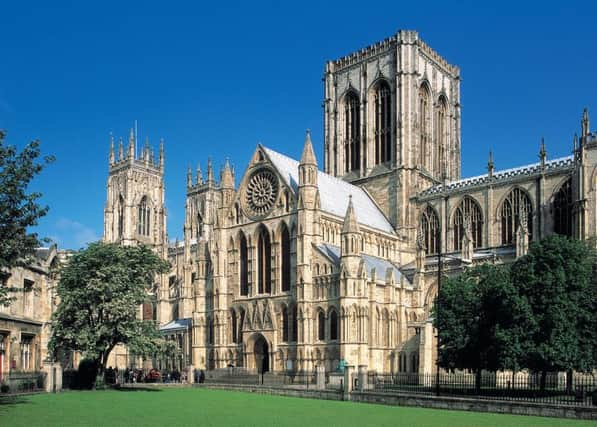York is number one spot for top end buyers


House price growth in York has significantly outperformed the rest of Yorkshire since the credit crunch, according to new research by Savills.
In the prime, top-end market, average values in York city centre are now 12 per cent above their 2007 peak.
Advertisement
Hide AdAdvertisement
Hide AdBy contrast, prime values are still on average minus 10.9 per cent below this level in the surrounding villages and countryside.
However, signs of recovery can be seen in rural areas as prices rose 2.1 per cent between January and March this year, the strongest quarterly growth since 2009. This is being driven by increased positive sentiment and a number of buyers who have been looking for a long time committing to buying, according to Savills residential researcher Sophie Chick.
She says: “The strong growth in York city centre prices highlights a continuing trend seen across the UK. Attractive towns and cities that are well connected, have a core of good quality family housing and a choice of high-performing schools have become the focus of a widening profile of affluent buyers. York ticks all these boxes and more. Few cities in the world can rival York for history and character.”
The city’s characterful, medieval streets, the Minster, river and racecourse are all part of the attraction, as are the shops and fashionable suburbs, such as Bishopthorpe, known as the Notting Hill of the north. The proximity to coast and country is also a big draw. The North Yorks Moors, the Wolds, Whitby and Scarborough are all a short drive away.
Advertisement
Hide AdAdvertisement
Hide AdIn the 15 months to March 2016, the average sale price across the York district, which includes the city but stretches from Strensall in the north to Copmanthorpe in the south, was £243,000 according to Land Registry records. This is 43 per cent higher than the Yorkshire average of £170,000.
The most expensive areas are the wards of Derwent to the east of the city, which covers the village of Dunnington, and rural west York, containing Upper and Nether Poppleton, which saw average sale prices of £322,000 and £312,000 respectively.
Over the last five years buyers from within Yorkshire have consistently accounted for three-quarters of prime property purchases in York, its commuter villages and the nearby Howardian Hills. However, over the past two years, the buyers from outside the region have moved in from a wider range of locations, rather than predominantly from London as seen previously. Those moving from the capital still play an important role. In some cases, the London commuter belt reaches as far as York, with 24 per cent of buyers of prime property in York and seven per cent of buyers in the surrounding villages working in London, although often just three days a week. The two-hour train ride from York to London is another reason for the city’s popularity with those relocating.
“This comes as buyers recognise the very large value advantage of selling a home in London and buying a property in York,” says Sophie Chick.
Advertisement
Hide AdAdvertisement
Hide AdIn Fulham, a four-bedroom terraced house with 2,000sq ft of space costs an average £1.5m while a similar property in a sought-after area of York is £600,000.
Savills’ research confirms that good schools attract families to both York and the surrounding villages as the majority of both private and state schools in the city perform above the national average. Families with children accounted for nearly three-quarters of buyers of prime property over the past year and the high-performing state schools, such as Millthorpe and Fulford, drive demand within their catchment areas.
York city centre increasingly attracts older buyers looking to downsize, often moving from the countryside to be closer to local amenitie. Other buyers include young professionals, buy-to-let investors and second home buyers. In the rural locations surrounding York, second home buyers are back, although they are not as numerous as before the credit crunch. Savills predict that prime values across the north will grow by an average of 18.2 per cent over the next five years.